Youth Volunteer Team
Do you want to make an impact in your community, but don’t know where to start?
Join our Invasive Species Youth Program and learn the skills you need for success.
- Learn how to engage the public and build an effective team.
- Gain experience in project management and budget building.
- Get access to training opportunities in habitat restoration, invasive species management, leadership, and more!
- Receive personalized support from our youth engagement coordinators.
- Have your project funded – up to $5,000 available per project.
- Connect with youth across Canada and grow your network.
- Help prevent the spread of invasive species and help keep ecosystems healthy.
- Design and lead your own community project or join another one (ex: weed pull, restoration, garbage clean-up).
- Gain practical, hands-on work experience.
- A safe and inclusive space to feel welcome, supported, and valued.
- Volunteer/service hours and professional references.
- Must be 15-30 years old
- Must have Canadian citizenship, permanent resident status, or refugee status
how it works

OnBoarding
After completing the registration form, a coordinator will invite you for a one-on-one meeting to discover how your goals, passions and interests can be matched with our diverse range of community service opportunities.

Make Connections
Meet other volunteers either in-person at an event near you, or virtually at our ongoing program meetings and Discord server.
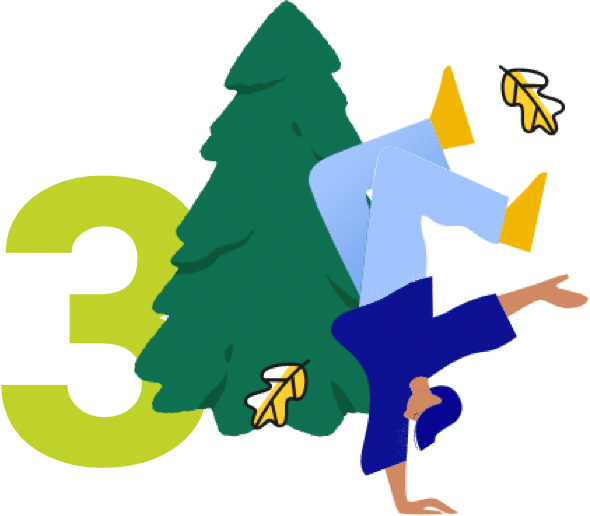
Build knowledge & skills
Your coordinator is your resource for professional development. They will help you engage in real-world projects and activities that are meaningful to you, your community and the environment. Receive personalized support, gain free access to webinars, courses, and workshops that will make you confident in taking on your own community project.
Celebrate!
Capture memorable photos, write blog posts, or find other creative ways to celebrate the work that you’re doing to protect BC’s natural landscapes for future generations to come. Share your project story with youth volunteers across Canada!
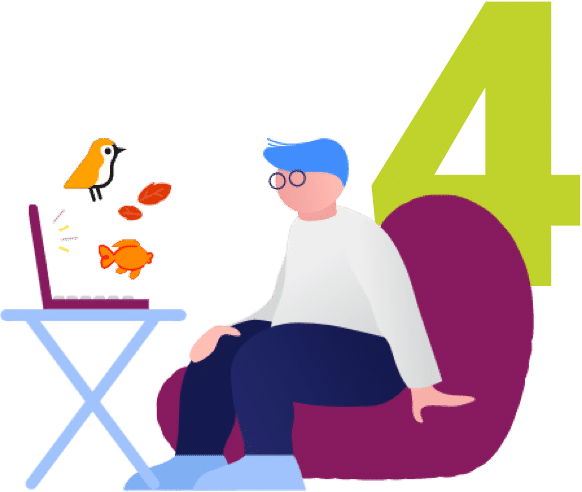
Diversity, Equity and Inclusion
ISCBC is committed to equality, diversity, and inclusion in the workplace and in all our programs. All qualified participants interested in the Invasive Species Youth Program will receive consideration without regard to race, color, religion, gender, gender identity or expression, or disability. It is important to us that our programs and resources are accessible to people living in all parts of BC and Canada. We strive to offer accessible programming both virtually and in person.
Youth Projects
Youth from across the province are making a difference in their communities. Explore ongoing projects and join us today!
taking action
Ready to make a difference in your local environment and community? Check out these ideas to get you started.
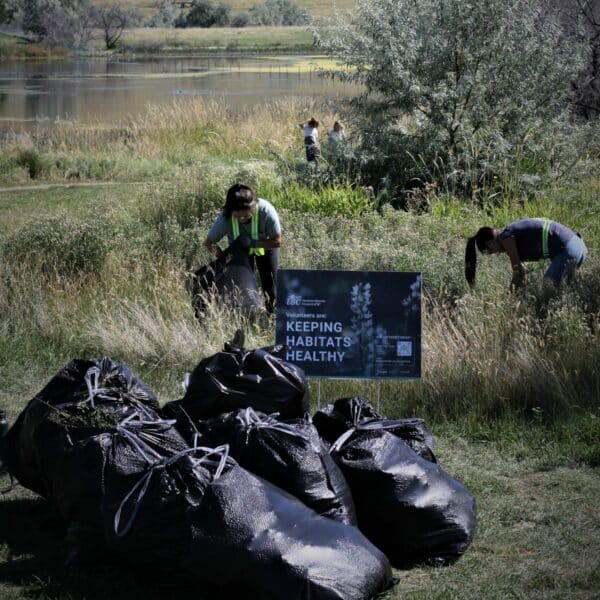
- What qualifications do I need to volunteer?
- You don’t need to have any experience just a willingness to learn! Due to our funding requirements our volunteer must hold a Canadian citizenship, Permanent residency status, or refugee status and be 15-30 years of age.
- I have been an ISCBC volunteer for a while but I’m now over 30, can I still volunteer in this new program?
- Yes, please send us an email lbosch@bcinvasives.ca and we can chat to see how you can stay involved! We would absolutely love to have you participate in volunteering.
- I’m 31, can I volunteer? or I’m 14, can I volunteer?
- We love to see the enthusiasm regarding this program! However, our funders specify participants be between the ages of 15-30. Please send us an email at lbosch@bcinvasives.ca to see how you can get involved or check out our website for our free eLearning courses, education page, and more! You can get involved in the following ways:
- Join our Community Science Network
- Further your knowledge on invasives species by taking our free courses on our Learning Centre
- Try out our Games & Activities for kids
- We love to see the enthusiasm regarding this program! However, our funders specify participants be between the ages of 15-30. Please send us an email at lbosch@bcinvasives.ca to see how you can get involved or check out our website for our free eLearning courses, education page, and more! You can get involved in the following ways:
- What are the benefits of volunteering with ISCBC?
- Hands on experience in leading community projects, project management, invasive species management and restoration, making a difference in your community, gaining volunteer hours for high school or social programs, receiving a letter of reference, connecting with other like-minded individuals across Canada, building life-long friendships, training opportunities, and gain employable skills for industry professionals in the environmental non-profit sector you can add to your resume.
- Is there a minimum number of hours I need to commit to joining ISCBC’s youth program? I work and/ or am in school, how do I fit volunteering into my schedule?
- There is no minimum commitment – it’s completely up to you how many hours you’d like to contribute! We understand that school, work, and other commitments can make it difficult to predict how much time you can dedicate to volunteering. Our program is flexible and is designed to work with what best fits your personal schedule.
- Do I have to be involved with field-based events like invasive plant removal?
- Only if you want to! If you’re unable to join field-based events or it simply isn’t your cup of tea, there are many ways you can get involved in environmental and community stewardship, even from the comfort of your own home! You can chat with your Youth Coordinator and discuss how you’d like to get involved.
- I have an idea for a project, how do I start?
- Contact your regional Youth Engagement Coordinator who is happy to mentor you to equip you through a community engagement project.
- Why aren’t you including people outside of the ages 15-30?
- This age requirement is stipulated by the funders of this youth program. Please check out our education page and our fabulous and free eLearning courses for more opportunities!
- Is there any other way I can get involved with volunteering or learning about invasive species?
- Absolutely! You can be involved in preventing the spread of invasive species by joining our Community Science Network, where you can learn how to identify and report invasives, get access to free video resources, and receive our monthly newsletter, all for free! (**double check to make sure this is still going). We also recommend that you check your regional invasive species council to see if they have any upcoming events where you can volunteer.
- Why did you choose a funding source that was just for youth, Canadian citizenship, Permanent residency status, or refugee status?
- ISCBC strives to be an inclusive organization that offers accessible programming. Our outstanding funding team works hard to apply for funds that can support our goals. However, funders all have specific targets that we have to meet, and these are the ones we are currently needing to accommodate. ISCBC is incredibly grateful for the funding that supports our projects. Please check out our website for free resources, eLearning, and other ways to get involved!
- Why aren’t you including people who don’t meet the citizenship requirements?
- Due to our funding requirements, our volunteers must hold Canadian citizenship, Permanent residency, or refugee status. Please email us at lbosch@bcinvasives.ca to see how you can get involved or check out our website at bcinvasives.ca for more opportunities! You can get involved in the following ways:
- Join our Community Science Network
- Further your knowledge on invasives species by taking our free courses on our Learning Centre
- Try out our Games & Activities for kids
- Due to our funding requirements, our volunteers must hold Canadian citizenship, Permanent residency, or refugee status. Please email us at lbosch@bcinvasives.ca to see how you can get involved or check out our website at bcinvasives.ca for more opportunities! You can get involved in the following ways:
Volunteer News & Events
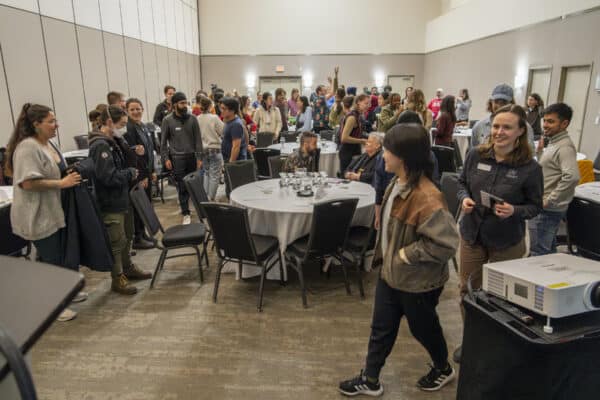
Community Voice
The Future of Tomorrow is the Youth of TodayBy Alex Mutch| March 27, 2024 On Saturday February 3rd youth volunteers from across Canada assembled in Ottawa to present and discuss community projects piloted in a Nationwide Youth Showcase.…
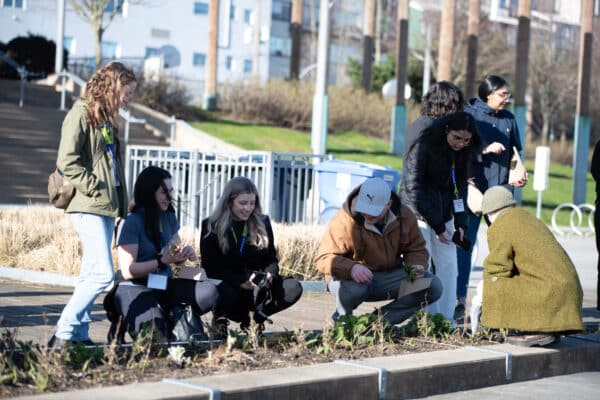
Community Voice
Youth Eco Leaders Gather from Across Canada in New WestminsterBy Julia Fracassi | March 19, 2024 What makes a Youth Eco Leader? How can we elevate and support the voices of youth concerned for our environment? On February 26th,…
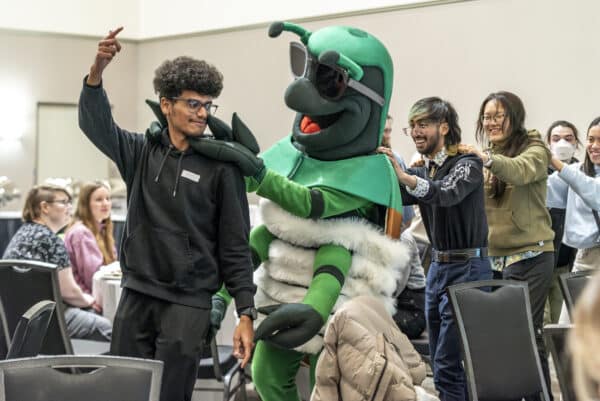
Community Voice
Youth Rooting to Tackle Invasives and Transform CommunitiesBy Veronica Panama | March 7, 2024 With passion and purpose, youth from across Canada recently gathered in Ottawa for an inspiring three-day national youth summit co-hosted with the Canadian…
Youth are mobilizing in their communities
110 community sites enhanced, 194 events hosted, 443 bags of invasives removed, 458 volunteers making a difference, 24240 hours volunteered, 1 stuffed Minions™ toy rescued, 3 abandoned shopping carts returned
Funding acknowledgements
The Invasive Species Youth Program is funded in part by Canada Service Corps, a national movement that empowers youth aged 15–30 to gain experience and build important skills while giving back to their community. Learn more at Canada.ca/CanadaServiceCorps.
This project has been made possible in part by the Government of Canada. Ce projet a été rendu possible en partie grâce au gouvernement du Canada.
Avez-vous déjà voulu créer un impact dans votre communauté, mais vous ne saviez pas par où commencer?
Rejoignez notre Programme jeunesse sur les espèces envahissantes et acquerrez les compétences dont vous avez besoin pour réussir.
- Contribuer à prévenir la propagation des espèces envahissantes et à maintenir les écosystèmes en bonne santé.
- Concevoir et mener son propre projet communautaire ou en joindre un (désherbage, restauration, nettoyage de déchets).
- Acquérir une expérience professionnelle pratique.
- Acquérir des compétences en matière de gestion et de planification de projets, de gestion budgétaire, d’engagement du public, de travail en équipe, de communication, de leadership et de facilitation.
- Recevoir une formation sur la restauration des habitats, l’élimination des plantes envahissantes, le leadership, l’engagement du public, etc.
- Profiter d’un espace sûr et inclusif où l’on se sent apprécié, soutenu et valorisé.
- Accumuler des heures de bénévolat/de service.
- Obtenir des références professionnelles.
- Tisser des liens avec des jeunes de partout au pays et échanger des idées et des histoires concernant les projets.
- Vous devez avoir entre 15 – 30 ans.
- Vous devez être citoyen(ne) canadien(ne), un(e) résident(e) permanent(e) ou une personne ayant obtenu le statut de réfugié au Canada.
MISE EN MARCHE

INTÉGRATION
Après avoir rempli le formulaire d’inscription, un(e) coordinateur(trice) vous invitera à une rencontre pour découvrir comment vos objectifs, vos passions et vos intérêts peuvent correspondre à nos différentes possibilités de service communautaire.

CONNECTEZ-VOUS
Rencontrez d’autres bénévoles soit en personne lors d’un événement près de chez vous ou virtuellement lors de nos réunions de programme et sur notre serveur Discord.

DÉVELOPPEZ VOS COMPÉTENCES
Votre coordinateur(trice) est votre ressource en matière de développement professionnel. Il (elle) vous engagera dans des projets et des activités concrets qui ont un sens pour vous, votre collectivité et l’environnement. Recevez un soutien personnalisé, accédez à des webinaires, cours et ateliers gratuits qui vous permettront d’entreprendre votre propre projet communautaire en toute confiance.
CÉLÉBREZ!
Prenez des photos mémorables, rédigez des articles dans des blogues ou trouvez d’autres moyens créatifs de faire valoir le travail que vous faites pour pour l’environment et pour les prochaines générations. Faites connaître l’histoire de votre projet auprès des jeunes bénévoles de tout le Canada!

ÉQUITÉ, DIVERSITÉ ET INCLUSION
À ISCBC, nous nous engageons en faveur de l’égalité, de la diversité et de l’inclusion sur le lieu de travail et dans tous nos programmes. Tous les participants qualifiés intéressés par le programme jeunesse sur les espèces envahissantes seront pris en considération sans distinction de race, de couleur, de religion, de sexe, d’identité ou d’expression sexuelle, ou de handicap. Il est important pour nous que nos programmes et nos ressources soient accessibles aux personnes de toutes les régions du Canada, et nous nous efforçons d’offrir des programmes accessibles à la fois virtuellement et en personne.
EXCELLENTS PROJETS DE BÉNÉVOLAT
Des jeunes de tout le Canada font la différence dans leur collectivité. Découvrez les projets passés et en cours et soyez des nôtres dès aujourd’hui! Veuillez noter que le lien suivant mène à une page en anglais uniquement.
Passer à l’action
Prêt à faire la différence dans l’environnement de votre collectivité? Voici quelques idées pour vous aider à commencer. Veuillez noter que le lien suivant mène à une page en anglais uniquement.

- Quelles sont les qualifications requises pour devenir bénévole?
- Aucune expérience n’est nécessaire : il suffit d’avoir envie d’apprendre! En raison de nos exigences en matière de financement, nos bénévoles doivent avoir la citoyenneté canadienne, le statut de résident permanent ou le statut de réfugié et être âgés de 15 à 30 ans.
- Quels sont les avantages du bénévolat au sein de l’ISCBC?
- Vous établirez des connexions avec des jeunes partageant les mêmes idées à travers le Canada tout en développant vos compétences employables dans le secteur environnemental à but non lucratif que vous pouvez ajouter à votre CV. Complétez vos heures de bénévolat scolaire et recevez une lettre de référence. Acquérez de l’expérience dans la direction de projets communautaires en prennant des mesures concrètes en faveur de votre communauté.
- Y a-t-il un nombre minimum d’heures à consacrer au programme ? Je travaille et/ou je suis à l’école, comment puis-je intégrer le bénévolat dans mon horaire?
- Il n’y a pas d’engagement minimum! À vous de décider du nombre d’heures que vous souhaitez consacrer au programme! Nous comprenons que l’école, le travail et d’autres engagements peuvent compliquer la prévision du temps que vous pouvez consacrer au bénévolat. Notre programme est flexible et conçu pour s’adapter à votre horaire.
- Dois-je participer à des activités de terrain tels que l’élimination de plantes envahissantes?
- Seulement si vous le voulez! Si vous n’êtes pas en mesure de participer à des activités de terrain ou si ce n’est tout simplement pas ce qui vous fait vibrer, il existe de nombreuses façons de participer à la gestion de l’environnement et de la collectivité, même depuis le confort de votre salon! Vous pouvez discuter avec votre coordinateur(trice) de la manière dont vous souhaitez contribuer.
- J’ai été bénévole à l’ISCBC pendant un certain temps mais j’ai maintenant plus de 30 ans, puis-je encore être bénévole dans le cadre de ce nouveau programme?
- Oui! Écrivez-nous à lbosch@bcinvasives.ca et nous pourrons discuter de la manière dont vous pouvez continuer à contribuer. Nous serions ravis que vous participiez au bénévolat.
- J’ai 31 ans, puis-je être bénévole? J’ai 14 ans, puis-je être bénévole?
- Nous sommes ravis de voir l’enthousiasme que suscite ce programme! Cela dit, nos bailleurs de fonds précisent que les participants doivent être âgés de 15 à 30 ans. Veuillez nous écrire à lbosch@bcinvasives.ca pour savoir comment vous pouvez contribuer ou consultez notre site web pour découvrir nos cours d’apprentissage en ligne gratuits, notre page consacrée à l’éducation, et plus encore! Vous pouvez participer de la manière suivante :
-
- Joignez notre réseau sur la science communautaire
- Approfondissez vos connaissances sur les espèces envahissantes en suivant un cours gratuit dans notre centre d’apprentissage
- Essayez nos jeux et activités pour les enfants
- J’ai une idée de projet; par où commencer?
- Remplissez le formulaire d’inscription et contactez votre coordinateur(trice) régional qui se fera un plaisir de vous accompagner dans un projet d’engagement communautaire.
- Pourquoi avez-vous choisi une source de financement réservée aux jeunes, à la citoyenneté canadienne, au statut de résident permanent ou au statut de réfugié?
- À ISCBC, nous insistons pour être un organisme inclusif qui offre une programmation accessible. Notre remarquable équipe de financement travaille d’arrache-pied pour solliciter des fonds susceptibles de soutenir nos objectifs. Cependant, les bailleurs de fonds ont tous des objectifs spécifiques que nous devons atteindre, et c’est dans le cadre de ces paramètres que nous travaillons actuellement. Nous sommes profondément reconnaissants des fonds qui soutiennent nos projets. Consultez notre site web pour obtenir des ressources gratuites, des formations en ligne et d’autres moyens de participer!
Nouvelles et événements concernant les bénévoles

Community Voice
The Future of Tomorrow is the Youth of TodayBy Alex Mutch| March 27, 2024 On Saturday February 3rd youth volunteers from across Canada assembled in Ottawa to present and discuss community projects piloted in a Nationwide Youth Showcase.…

Community Voice
Youth Eco Leaders Gather from Across Canada in New WestminsterBy Julia Fracassi | March 19, 2024 What makes a Youth Eco Leader? How can we elevate and support the voices of youth concerned for our environment? On February 26th,…

Community Voice
Youth Rooting to Tackle Invasives and Transform CommunitiesBy Veronica Panama | March 7, 2024 With passion and purpose, youth from across Canada recently gathered in Ottawa for an inspiring three-day national youth summit co-hosted with the Canadian…
LES JEUNES CANADIENS SE MOBILISENT
110 SITES COMMUNAUTAIRES AMÉLIORÉS, 194 ÉVÉNEMENTS ORGANISÉS, 443 SACS DE DÉSHERBAGE, 458 BÉNÉVOLES QUI FONT LA DIFFÉRENCE, 24240 HEURES DE BÉNÉVOLAT, 1 PELUCHE MINONSmc RESCAPÉE, 3 PANIERS D’ÉPICERIE ABANDONNÉS RETOURNÉS
RECONNAISSANCE DU FINANCEMENT
Le Programme jeunesse sur les espèces envahissantes est financé en partie par Service Jeunesse Canada, un mouvement national qui permet aux jeunes de 15 à 30 ans d’acquérir de l’expérience et des compétences importantes tout en redonnant à leur communauté. Apprenez-en d’avantage en visitant Canada.ca/ServiceJeunesseCanada.
This project has been made possible in part by the Government of Canada. Ce projet a été rendu possible en partie grâce au gouvernement du Canada.



